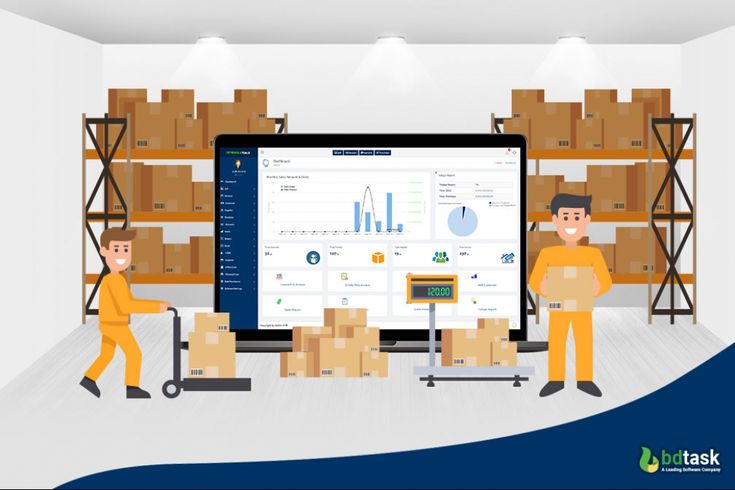
Effective Inventory Management Techniques
“Effective Inventory Management Techniques”
Effective inventory management is crucial for any business that deals with physical products. It involves tracking inventory levels, orders, sales, and deliveries to ensure the right products are available at the right time. This article explores various inventory management techniques that can help businesses maintain optimal inventory levels, reduce costs, and improve customer satisfaction.
Understanding Inventory Management
Definition and Importance
Inventory management involves tracking and controlling stock levels to meet customer demand without incurring unnecessary costs. By maintaining an optimal inventory, companies can improve cash flow, reduce storage costs, and enhance customer satisfaction. Effective inventory management also allows businesses to quickly respond to market changes and avoid disruptions in the supply chain.
Types of Inventory
Inventory can be categorized into several types, including raw materials, work-in-progress (WIP), finished goods, and maintenance, repair, and operations (MRO) inventory. Raw materials are the primary inputs used in production, WIP includes items that are partially completed, and finished goods are products ready for sale. MRO inventory consists of supplies used in the maintenance and repair of production equipment, and understanding these categories helps businesses manage their inventory more effectively by optimizing stock levels and improving operational efficiency.

Credit: bdtask.com
Setting Inventory Goals
Aligning with Business Objectives
Inventory goals should align with overall business objectives to ensure that every aspect of the business strategy works cohesively. For instance, a company focusing on rapid market expansion might prioritize high inventory levels to meet increased demand and ensure customer satisfaction. Conversely, a company aiming for cost reduction might focus on minimizing inventory to reduce carrying costs and improve cash flow, aligning with its objective to maximize profitability.
Establishing KPIs
Key Performance Indicators (KPIs) are essential for measuring the effectiveness of inventory management strategies, as they provide quantitative data to assess and improve performance. Common KPIs include inventory turnover rate, which measures how often inventory is sold and replaced over a specific period; carrying cost of inventory, which calculates the total cost of holding inventory, including storage and insurance; and order accuracy, which tracks the percentage of orders fulfilled without errors. By monitoring these KPIs, businesses can identify inefficiencies, optimize inventory levels, and enhance customer satisfaction.
Inventory Management Methods
Just-In-Time (JIT)
Just-in-Time (JIT) is a strategy where inventory is ordered and received just in time for production or sales, minimizing the time products spend in storage. This method significantly reduces holding costs, as it eliminates the need for large warehousing spaces and decreases the risk of overstock. However, it requires precise demand forecasting and reliable suppliers to ensure that materials and products are available exactly when needed without causing production delays or stockouts.
ABC Analysis
ABC analysis is a method used in inventory management that classifies items based on their importance to the business, dividing them into three distinct categories. Group A consists of high-value items that are typically kept in lower quantities, making them crucial for business success. At the same time, Group B includes moderate-value items that are maintained in moderate amounts, and Group C contains low-value items that are held in large quantities. By focusing on these categories, businesses can effectively prioritize their management efforts, ensuring that resources are allocated efficiently to the most critical items, which can significantly enhance overall operational efficiency.
Economic Order Quantity (EOQ)
The Economic Order Quantity (EOQ) formula helps businesses identify the most cost-effective amount of inventory to order at one time. By calculating the optimal order quantity, companies can effectively balance holding costs, order costs, and stockout costs, leading to improved inventory management. Implementing EOQ can result in significant savings and increased efficiency in supply chain operations, ultimately enhancing overall profitability.

Credit: expertiseaccelerated.com
Technology in Inventory Management
Barcode Scanning Systems
Barcode scanning systems streamline inventory tracking by automatically reading barcodes on products, which enhances accuracy and efficiency. By minimizing manual entry, this technology significantly reduces the likelihood of errors that can lead to stock discrepancies and operational inefficiencies. Additionally, the speed at which these systems operate allows businesses to manage inventory more effectively, saving time and resources in the overall supply chain process.
Radio Frequency Identification (RFID)
RFID technology utilizes radio waves to automatically identify and track inventory items, making the process much faster and more efficient. Unlike traditional barcode systems, which require a line of sight for scanning, RFID can read multiple tags simultaneously, even in challenging environments like large warehouses. This enhanced capability leads to improved accuracy in inventory management, reducing errors and streamlining businesses’ operations.
Inventory Management Software
Inventory management software offers real-time visibility into inventory levels, enabling businesses to track stock accurately and avoid shortages or overstock situations. It automates ordering processes, streamlines procurement, and reduces manual errors, saving time and increasing efficiency. Additionally, these systems generate comprehensive reports, offering valuable insights into inventory trends, sales performance, and overall operational efficiency. Popular options include Oracle NetSuite, SAP, and QuickBooks Commerce.
Demand Forecasting
Importance of Accurate Forecasting
Accurate demand forecasting is crucial for maintaining optimal inventory levels, ensuring that businesses have just the right amount of stock to meet customer needs without overstocking or understocking. By analyzing historical data, market trends, and other relevant factors, companies can predict future demand more precisely. This proactive approach helps reduce costs, improve customer satisfaction, and enhance overall operational efficiency.
Techniques for Demand Forecasting
Common analysis techniques encompass both qualitative and quantitative methods. Qualitative methods include expert opinion, which involves gathering insights from specialists in the field, and market research, which collects data on consumer behavior and preferences. Quantitative methods involve numerical analysis, such as time series analysis, which examines data points over time to identify trends, and regression analysis, which assesses the relationships between variables to make predictions.

Credit: microsysinc.ca
Supplier Relationship Management
Building Strong Supplier Relationships
Strong relationships with suppliers are crucial for reliable inventory management as they ensure a timely and consistent supply of materials. This involves regular communication to stay updated on stock levels and potential delays, collaboration to address any issues proactively, and mutual trust to foster a dependable and transparent partnership. By maintaining these strong relationships, companies can better manage their inventory, reduce downtime, and optimize their supply chain operations.
Negotiating Favorable Terms
Negotiating favorable terms with suppliers, such as bulk discounts or flexible payment options, allows businesses to reduce their overall inventory costs. This can lead to improved cash flow, as businesses can purchase larger quantities at lower prices or pay over an extended period. Consequently, effective supplier negotiations contribute to enhanced financial stability and operational efficiency.
Warehouse Organization
Layout Optimization
Optimizing warehouse layout significantly enhances inventory accessibility, ensuring that items are easy to locate and retrieve, which in turn reduces overall handling times. Effective strategies for achieving this include grouping similar items to streamline picking processes and utilizing vertical storage solutions to maximize available space. By implementing these techniques, warehouses can operate more efficiently, minimize errors, and improve overall productivity.
Efficient Picking Systems
Efficient picking systems, like zone picking or wave picking, optimize the order fulfillment process by segmenting tasks into manageable zones or batches. This approach allows workers to focus on specific areas or groups of orders, enhancing speed and accuracy. Consequently, these systems significantly reduce errors and improve overall operational efficiency.

Credit: efinancemanagement.com
Inventory Turnover Ratio
Calculating Turnover Ratio
The inventory turnover ratio indicates a company’s efficiency in managing and selling its inventory within a specific time frame. By calculating this ratio, businesses can determine how quickly they can sell their products and restock inventory, which in turn reflects their sales performance and operational efficiency. The formula to calculate this ratio is dividing the cost of goods sold by the average inventory, providing a clear picture of inventory management effectiveness.
Strategies to Improve Turnover
To improve turnover, businesses can start by enhancing their demand forecasting to align inventory with customer needs better. Additionally, reducing lead times can help ensure products are available when customers want them, preventing stockouts and overstock situations. Lastly, offering promotions and discounts on slow-selling items can quickly move inventory, freeing up space for more popular products.
Safety Stock and Reorder Points
Importance of Safety Stock
Safety stock acts as a buffer against unexpected demand spikes or supply chain disruptions. By maintaining a reserve of inventory, a company can meet customer demand even during unforeseen events. This practice helps prevent stockouts, maintains customer satisfaction, and supports continuous business operations despite uncertainties.
Determining Reorder Points
Reorder points are critical thresholds that signal when new inventory needs to be ordered to avoid stockouts. These points are determined by calculating the demand during lead time and factoring in safety stock levels to account for variability in supply and demand. By monitoring these reorder points, businesses can ensure they maintain optimal inventory levels and avoid disruptions in their supply chain.

Credit: entrepreneur.com
Reducing Excess Inventory
Identifying Excess Inventory
Excess inventory ties up capital and incurs additional holding costs, such as storage fees and insurance. Identifying excess inventory requires analyzing inventory turnover rates to understand how quickly stock is moving and comparing current stock levels to historical demand patterns to spot discrepancies. This process helps optimize inventory levels and reduce unnecessary expenses.
Strategies to Reduce Excess Inventory
Strategies for managing inventory and preventing stock obsolescence often involve offering discounts to clear out slow-moving items, creating bundled product deals to encourage purchases of multiple items together, or implementing a first-in, first-out (FIFO) system to ensure that older inventory is sold before newer stock. Offering discounts can help move products that are approaching their expiration or obsolescence date, while bundling can increase sales volume and attract more customers. The FIFO system helps to maintain the freshness and relevance of inventory by ensuring that the oldest stock is sold first, reducing the risk of unsold or outdated items.
Cycle Counting
Benefits of Cycle Counting
Cycle counting is a method where a portion of the inventory is counted on a regular basis to maintain accuracy throughout the year. This approach allows for timely identification and correction of discrepancies before they become more significant issues. As a result, it minimizes the need for extensive annual physical counts and helps maintain smoother inventory management.
Implementing Cycle Counting Programs
Implementing a cycle counting program requires careful planning and organization. First, suitable counting intervals must be chosen based on inventory turnover and business needs. Next, staff must be thoroughly trained in counting procedures and discrepancy management, and technology must be leveraged to track counts accurately and identify any discrepancies in real time.

Credit: qualityengineerstuff.com
Regular Audits and Reviews
Importance of Regular Audits
Regular audits ensure that inventory records are accurate and discrepancies are identified, which helps prevent errors and fraud. By maintaining data integrity, these audits support effective decision-making and resource allocation. Additionally, they provide insights into inventory management practices, enabling improvements and optimizations.
Conducting Effective Reviews
Effective reviews involve verifying that the physical inventory matches the records, identifying and analyzing any discrepancies, and determining their root causes. Once differences are identified, corrective actions should be implemented to address the issues and prevent them from recurring. This process ensures accurate inventory management and enhances the overall efficiency of operations.
Employee Training
Importance of Training Programs
Well-trained employees are crucial for effective inventory management because they can accurately track and control stock levels, reducing the likelihood of errors. Training programs equip staff with the necessary knowledge of inventory processes, technologies, and best practices, enabling them to manage the inventory system efficiently. This leads to improved productivity, reduced costs, and a smoother overall operation.
Implementing Training Strategies
Training strategies encompass hands-on training, workshops, and e-learning modules, each offering distinct benefits. Hands-on training provides practical experience, while workshops encourage interactive learning and discussion. E-learning modules offer flexibility and accessibility, and regular refresher courses are essential for maintaining and updating skills in a constantly evolving environment.

Credit: logility.com
Sustainability in Inventory Management
Green Inventory Practices
Adopting green inventory practices involves using eco-friendly packaging materials and sourcing products from sustainable suppliers, which helps reduce waste and carbon footprint. This approach not only minimizes the environmental impact but also aligns with the growing consumer demand for sustainable and ethical products. By embracing these practices, companies can attract eco-conscious customers and strengthen their brand’s reputation for environmental responsibility.
Reducing Waste
Strategies to reduce waste involve accurately predicting demand to avoid overproduction and stockpiling, which can lead to waste. Optimizing production processes can reduce material usage and improve efficiency, minimizing the generation of scrap and defective products. Implementing recycling programs ensures that materials are reused or repurposed, reducing the volume of waste sent to landfills and conserving resources.
Challenges in Inventory Management
Common Challenges
Inaccurate demand forecasting can lead to either stockouts or excess inventory, impacting customer satisfaction and profitability. Supply chain disruptions, such as delays or shortages, can halt production and delivery, requiring contingency plans and flexible sourcing. Managing excess inventory involves balancing storage costs with the risk of obsolescence, necessitating efficient inventory control and clearance strategies.
Overcoming Challenges
Overcoming these challenges requires a commitment to continuous improvement, which involves regularly assessing and refining existing strategies. Adopting new technologies can streamline operations and enhance efficiency, making it easier to manage inventory. Maintaining flexibility in inventory management processes allows businesses to quickly adapt to changing market conditions and customer demands.

Credit: esellerhub.com
Future Trends in Inventory Management
Technological Advancements
Technological advancements such as AI and IoT are revolutionizing inventory management by automating tasks, reducing human error, and optimizing stock levels. AI algorithms analyze data to forecast demand and manage supplies, while IoT devices provide real-time tracking of inventory, reducing overstock and stockouts. This integration leads to improved efficiency, cost savings, and enhanced decision-making capabilities.
Predictive Analytics
Predictive analytics involves analyzing historical data to identify patterns and make informed predictions about future events. By leveraging statistical algorithms and machine learning techniques, it enables businesses to anticipate customer demand, optimize inventory levels, and allocate resources more efficiently. This proactive approach not only helps in reducing costs but also enhances overall decision-making and operational efficiency.
FAQs: Effective Inventory Management Techniques
What is inventory management?
Inventory management is the process of overseeing and controlling the ordering, storage, and use of products that a company will sell or use.
What are the types of inventory?
Inventory types include raw materials, work-in-progress (WIP), finished goods, and maintenance, repair, and operations (MRO) inventory.
What is the Just-In-Time (JIT) method?
The JIT method involves receiving goods only as they are needed in the production process, reducing inventory holding costs.
How do you calculate the inventory turnover ratio?
The inventory turnover ratio is calculated by dividing the cost of goods sold by the average inventory.
What is safety stock?
Safety stock is extra inventory kept on hand to prevent stockouts due to unexpected demand or supply chain disruptions.
How can excess inventory be reduced?
Offering discounts, bundling products, and implementing a first-in, first-out (FIFO) system can reduce excess inventory.
Conclusion
Effective inventory management techniques are vital for any business looking to optimize operations and boost profitability. By understanding different methods, leveraging technology, and focusing on accurate forecasting and strong supplier relationships, businesses can achieve efficient inventory management. Regular audits, employee training, and sustainable practices further enhance inventory control, ensuring long-term success and adaptability to future trends.






